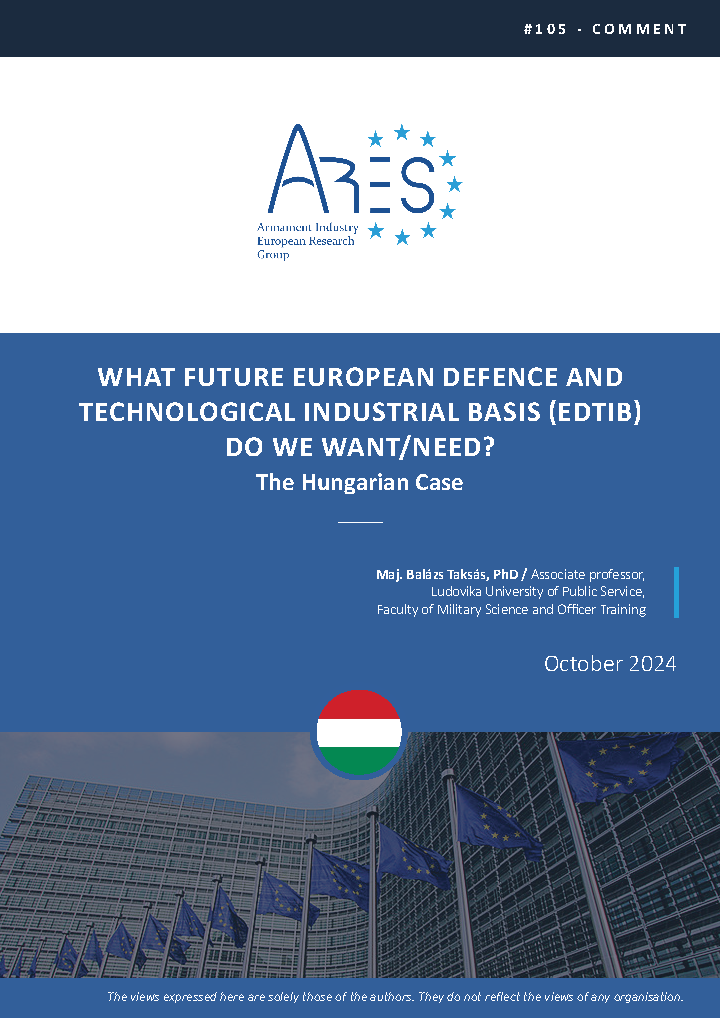Notes / Ares Group - The Armament Industry European Research Group
15 octobre 2024
What Future European Defence and Technological Industrial Basis (EDTIB) Do We Want/Need? The Hungarian Case

The 2022 Russian aggression war has exposed several serious weaknesses in the European Defence Technological and Industrial Base (EDTIB) that experts were already aware of, but which have only now become known to a wider public. Severe capacity and supply chain problems, fragmentation, lagging behind in the application of civilian technologies in defence, low level of cooperation and consequently poor technological absorption, etc. Given the historical and cultural context and the nature of the European welfare model, it will be difficult to respond to these challenges and to strengthen all three components of the defence industrial trilemma simultaneously. Hungary started from a much weaker base in defence industrial capabilities than the EU average, as it had not had a relevant defence industry before the « Zrínyi Defence and Military Development Program » implemented in 2016. However, the Defence Industrial Strategy, which was born as part of this programme, is a complex industrial development strategy aimed at creating a new and modern economic sector. And because there is a strong government commitment behind the strategy, it has mobilised the capital, labour, technological and innovation resources of the national economy.
Therefore, although the road to creating a truly competitive industry with long value chains is long and risky, if the strategy is successfully implemented, the Hungarian defence industrial ecosystem will be able to provide real added value to the European Defence Technological and Industrial Base.

